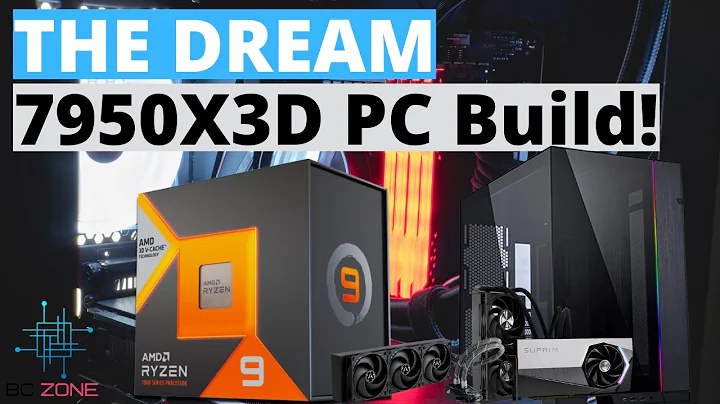Parameterizing DDR3 SDRAM Control: Optimize Performance and Connectivity
Table of Contents:
- Introduction
- Parameterizing the DDR3 SDRAM Control
2.1 Choosing the Memory Interface Speed
2.2 Selecting the PLL Reference Clock Frequency
2.3 Selecting the Memory Parameters
2.4 Setting up the Mode Register on the Memory Device
2.5 Entering the Timing Parameters for the Memory Device
2.6 Entering the Physical Characteristics of the Signals
2.7 Setting up the Avalon Interface
2.8 Enabling the Emif Toolkit
2.9 Simulation Options
- Generating the Example Design
- Correcting the Device Selection
- Running Analysis and Synthesis
- Adding Assignments and Pin Locations
- Full Compilation
- Programming the Board
- Hardware Diagnostics
- Using the External Memory Interface Toolkit
10.1 Initializing Connections
10.2 Linking the Project to the Device
10.3 Creating a Memory Interface Connection
10.4 Running Reports on Calibration
10.5 Performing Debug Tests
10.6 Generating a Margining Report
- Conclusion
Parameterizing the DDR3 SDRAM Control
In this article, we will explore the process of parameterizing the DDR3 SDRAM control in Altera. We will walk through the step-by-step instructions to configure the controller in hardware using an example design. The example design consists of a Pattern Generator and chatter that performs read and write operations on the controller, checking the correctness of the data read.
2.1 Choosing the Memory Interface Speed
The first step in parameterizing the DDR3 SDRAM control is to choose the memory interface speed. This decision is based on the external memory interface Beck estimator and the speed grade of the memory devices fitted on the board. By using the spec estimator, a quarter-rate interface is selected, and the PLL reference clock frequency is determined based on the available options.
2.2 Selecting the PLL Reference Clock Frequency
The PLL reference clock frequency is an essential consideration when parameterizing the DDR3 SDRAM control. It is based on the clock frequency that is available on the FPGA development kit. By selecting the appropriate frequency, the DDR3 controller can operate efficiently and synchronize with the memory devices.
2.3 Selecting the Memory Parameters
In this step, the memory parameters are selected for the DDR3 SDRAM control. The specific memory device, in this case, the micron device, and the discrete devices soldered directly to the board, are chosen. The speed grade of the devices, the interface type, and the address width are determined. This information is crucial for proper communication between the controller and the memory devices.
2.4 Setting up the Mode Register on the Memory Device
The mode register settings on the memory device are configured in this step. The CAS latency and write latency are chosen based on the specifications of the memory device. The termination settings are also determined through simulations of the board to optimize the performance of the memory interface.
2.5 Entering the Timing Parameters for the Memory Device
The timing parameters for the specific memory device are entered in this step. The preset window provides a list of devices, and the appropriate timing parameters for the micron device are chosen. These parameters ensure accurate and efficient data transfer between the DDR3 controller and the memory device.
2.6 Entering the Physical Characteristics of the Signals
The physical characteristics of the signals on the PCB are entered in this step. The slew rate and skew between different signals going to the memory devices are determined. These characteristics are derived through board-level simulations, ensuring optimal signal integrity in the DDR3 SDRAM control.
2.7 Setting up the Avalon Interface
The Avalon interface is set up in this step. The mapping between the Avalon interface and the addresses on the memory device is established. This configuration allows for seamless communication and data transfer between the DDR3 controller and the memory device.
2.8 Enabling the Emif Toolkit
The Emif toolkit is enabled in this step. This toolkit provides additional capabilities for analyzing and debugging the DDR3 SDRAM control. By enabling this toolkit, the designer gains access to powerful diagnostic and calibration tools for fine-tuning the memory interface.
2.9 Simulation Options
Simulation options are set up in this step. The designer can configure The Simulation settings to ensure accurate representation of the DDR3 SDRAM control behavior. These options allow for thorough testing and verification of the design before moving on to the next steps.
By following these steps, the DDR3 SDRAM control can be easily parameterized and optimized for efficient operation in Altera designs. The example design generated using these configurations can then be used as a starting point for further development and customization.
📌 Pros:
- Easy parameterization process
- Accurate timing and signal integrity control
- Comprehensive diagnostic and calibration tools available
📌 Cons:
- Requires careful selection of memory parameters and timing settings
- Simulation and compilation processes can be time-consuming
In conclusion, the parameterization of the DDR3 SDRAM control in Altera is a crucial step in designing efficient and reliable systems. By following the provided steps and considering the pros and cons, designers can optimize their memory interfaces and ensure high-performance operation.
Highlights
- Parameterizing the DDR3 SDRAM control for optimal performance
- Choosing the memory interface speed and PLL reference clock frequency
- Selecting the appropriate memory parameters and mode register settings
- Entering the timing parameters and physical characteristics of the signals
- Setting up the Avalon interface and enabling the Emif toolkit
- Simulation options for accurate representation of the design
FAQ
Q: Why is parameterizing the DDR3 SDRAM control important?
A: Parameterizing the DDR3 SDRAM control allows for optimized performance and efficient communication between the controller and the memory devices.
Q: What are the key considerations when selecting the memory parameters?
A: The specific memory device, speed grade, interface type, and address width are crucial factors that need to be taken into account when selecting memory parameters.
Q: What is the role of the Emif toolkit in the DDR3 SDRAM control?
A: The Emif toolkit provides powerful diagnostic and calibration tools for fine-tuning the memory interface, ensuring optimal performance.
Q: How can I verify the timing margins of the memory interface?
A: The external memory interface toolkit allows for running reports on calibration and generating margining reports to assess timing margins.
Q: Can I customize the example design generated for the DDR3 SDRAM control?
A: Yes, the example design serves as a starting point for further development and customization based on specific design requirements and objectives.
Resources:
 WHY YOU SHOULD CHOOSE TOOLIFY
WHY YOU SHOULD CHOOSE TOOLIFY

























